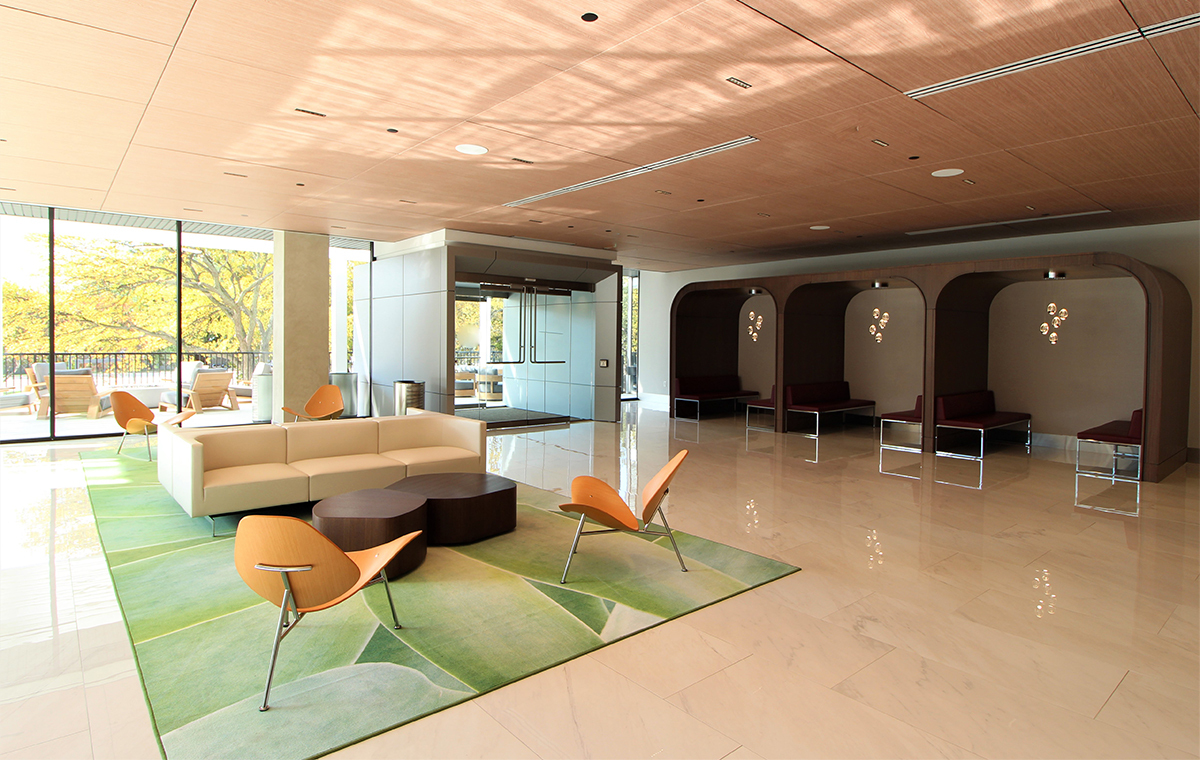The modern workplace is all about how company cultures build community.
Whether you’re a property team looking to create a thriving community of office tenants, or an employer who is seeking help in attracting top talent, you’re most likely driven by a similar truth: how you make community members feel will either make or break your business.
On a recent episode of Conversations with HqO — a podcast dedicated to the future of the workplace and the proptech industry — hosts Ben Rogers and Kristin Concannon sat down with Cortney Haney, Assistant Property Manager at Cushman & Wakefield. Cortney’s role is interesting, she explains, as she was specifically hired due to her background in hospitality. In her early career, she would rent out lake houses and create catered experiences for each customer. These experiences, she continues, ranged from going on walks together, sitting around campfires, playing board games, and more activities that allowed people to share a meaningful connection with one another.
In respect to the commercial real estate industry, this form of social capital is invaluable. So valuable, in fact, that Cortney focuses most of her time finding ways to create opportunities that replicate these experiences in the workplace at the Lincoln Centre in Dallas, Texas.
“Everything we do here is about making different connections,” she mentions. “Anytime someone comes up to me and says, ‘We’ve got this project that we want you to work on,’ the first thing I’m wondering is: how do we find someone local who can do this for us or who can provide this service? I think any time you can stay local, that’s how you build a strong culture and community, trust, and a positive impact. You get to give back to the people who are supporting your surrounding area.”
As the conversation continues, she reveals that such amenities and services have kept their employees engaged even during the height of the pandemic when most tenants were working on a remote or hybrid work schedule. To ensure that their events reached all people, they used a workplace experience platform to strengthen their employee experience and shorten the divide between the digital and physical workplaces.
And, she adds, their building’s mobile app did more than just create a shared sense of belonging among the many types of tenants in the Lincoln Centre. It also allowed her team to collect real-time feedback and analytics to see how tenants were receiving their events, programs, and services.
“I probably check our HqO app every day, if not multiple times a day, to see what’s going on,” she explains. “What are tenants clicking on? What are they interested in? What is resonating the most? What deals are they taking advantage of? All of those things are just a piece of the puzzle. We’ll also send out surveys, whether those go out by email, or in the newsletter, or through the app.”
These insights into tenant points of view allow her team to remain agile, repeating the events and services that people enjoy — and even cutting the cord on those that didn’t have high engagement rates.
At the end of the day, the Lincoln Centre serves as a model example of ways office communities organize to not only connect with one another on a deeper level, but also how they play a vital part of the surrounding area. These fully connected experiences differentiate workplaces around the world by making employees feel like they’re part of a bigger organizational purpose.
To learn more about Lincoln Centre and all of its community happenings, you can follow them on social media at @lincolncentredallas, or visit their website at www.lincolncentredallas.com.



